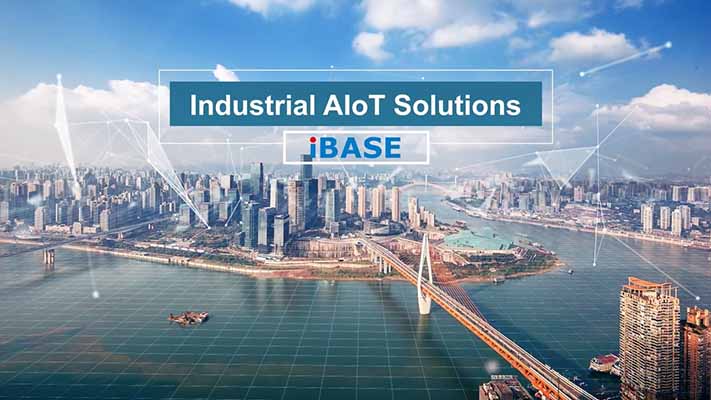OVERVIEW
The swift adoption of Industry 4.0 is fueling the growth of smart factories as manufacturers scramble to integrate these new technologies into their existing systems. According to a recent report on smart factory market size from Markets And Markets, growth is estimated from USD 80.1 billion in 2021 to USD 134.9 billion by 2026, representing a CAGR of 11.0%. The largest portion of this growth is in the APAC region, largely due to developments in modern industrial systems and the replacement of traditionally labor-intensive operations.
Factories are facing challenges on multiple fronts as they keep stride with the furious pace of the industry. The high cost of system upgrades is a significant obstacle as manufacturers make hard choices to implement new systems quickly while spreading costs and avoiding possibly risky upfront expenditure. Finding the balance and achieving satisfactory ROI requires consideration of legacy technologies, how modern technology trends are coming into play, including the influence of AI.
This white paper takes a closer look at the challenges faced by manufacturers and the software and hardware considerations in implementing a smart factory.
Benefits of Smart Factories
Before diving into the specific needs of smart factories, let’s take a moment to identify why the investment might be worth it.
- Match supply and demand: The big data analysis of systems in smart factories allows much better control of processes and makes quick alterations possible.
- Improve time-to-market: Automation always aims to speed up production. Smart factories allow a much more agile response to current conditions, reducing the time-to-market for new products.
- Optimize resources and processes: Big data analysis combined with AI can provide the information needed to allow changes in production necessary to reduce waste and improve quality. Monitoring of personnel standard operating procedures is even possible with machine vision systems.
- Increase worker safety: Smart factories protect workers from potential dangers, utilizing machine vision technologies to identify danger zones, or monitor adherence with SOP, to improve safety all around.
- Boost production quality: In parallel with productivity increases, the quality of products shipped improves through automated QA solutions that quickly detect problems in production systems, minimizing compromised output and quality control not possible with manual inspection.
With these benefits in mind, it’s time to look at some of the key technologies at play.
Key Technologies
The confluence of Information Technology and Operational Technology necessitates multiple developments to achieve the Industry 4.0 vision of a fully connected factory.
Time-sensitive networking: The control network, unlike a regular network, is time-sensitive, and signals between machines must happen instantaneously to avoid potential damage to products or personnel. Time-sensitive networking achieves this instantaneous communication over Ethernet cables.
IIoT: Taking the Internet of Things and tailoring the technology for use in industry. IIoT makes edge endpoints smart, allowing inter-machine communication over a fixed or wireless network, rather than through a central management hub.
Big Data: Using the collected data from sensors and inputs to create useful information to inform future decisions on processes. These post-production analyses are used to inform longer-term decisions and identify higher-level problems. For example, an industrial motor that is slightly underperforming compared to similar equipment, or showing signs of instability that indicate a pending hardware failure.
Artificial Intelligence: Systems that process data from sensors and inputs, and take appropriate action depending on the outcome of the data processing. As opposed to big data, where the data is collected for further analysis, AI aims to make decisions immediately based on inputs. For example, using machine vision to identify restricted areas and sound an alarm when a person enters that zone.
Bringing together these multiple elements is where the magic happens.
Getting to AIoT
AI is a recent addition to the smart factory, adding advanced artificial intelligence to perform various tasks autonomously or semi-autonomously. As the next step in the evolution of smart factory automation, AI has a slightly different set of requirements above and beyond what is already needed. The main hurdles are the processing capabilities of the underlying system hardware and rolling out algorithms to disparate hardware platforms.
The classic measure of system power, CPU speed, falls flat in this regard. The reason for this is that the CPU is optimized for generic processes. The incoming data is received in parallel and must be processed in bulk, at massive speeds. FPGAs are one solution for this, but are expensive and difficult to work with, while GPUs, once the exclusive domain of gamers looking to slap more and more pixels onto their screens at once have come into their own as the perfect match for these newer data processing tasks.
Creating algorithms to work on multiple hardware platforms is a challenge for developers who are focused on the outcome of their AI development, rather than the nuts and bolts of hardware compatibility. Development toolkits bridge this gap, optimizing the AI models for the different underlying hardware. For Intel hardware, the OpenVINO toolkit provides these capabilities for write-once, deploy-anywhere deep learning deployments.
Software Requirements
Software hinges on compatible hardware (outline below), but there are a handful of software technologies that streamline the integration process and are fundamental to creating the overall system.
Operating System: Windows and Linux (Ubuntu in particular) are the most popular choices. Ubuntu, the open-source option, is the most compatible operating system, but the ubiquity of Microsoft in the enterprise makes it the system of choice in organizations that use it. Only 64-bit versions are supported.
Intel OpenVINO: A free toolkit for optimizing and deploying deep learning solutions across multiple Intel platforms. Accelerate and optimize low-level, image processing capabilities, and maximize the performance of your application for any type of processor.
Hardware Requirements
The MAF800 industrial-grade embedded system series is designed for machine vision and factory automation facilities to automate shop floor processes and defect inspection based on deep learning with automated optical inspection (AOI) or vision-guided robotics (VGR).
Core Functions
Requirements vary between applications, but the system’s core features ensure a solid base for future upgrades and expansion, providing the backbone for a fast, capable system with industrial-focused upgrade potential.
- 9th/8th Gen Intel Core processors (Max. TDPv 65W)
- 2x DDR4 SO-DIMM, dual-channel, Max. 32GB
- 3x GigE ports
- 6x USB 3.0
- 1x M.2 2280 M Key
- Operating temperature range: -10°C to 50°C
Extended Functions
These extended functions build on the core system and provide additional computing power.
PoE+: An iteration on PoE technology, defined in IEEE 802.3at, that provides up to 25.5W to powered devices over standard Ethernet cable. PoE is most typically used for network cameras, but can also connect to high-speed cameras for AOI tasks (SUMIT module with 4x PoE+ and 1x COM).
GPU: Inference happens through the GPU. Extension to a full-length PCIe x16 expansion card provides access to the full spectrum of GPU cards, pretty much upgradeable on demand. The GPU expansion unit is an addon, so the base system can retain its small size until the GPU is added.
For the MAF800 series, PoE+ and GPU modules are optional, and customizable according to the exact specifications of the application.
Conclusion
The IBASE MAF800 is designed for AIoT applications in smart factories. It is designed for application in AOI, and other deep learning systems within smart factories. IBASE products are designed for long operational life, in some cases as long as 15 years, with full life cycle service and technical support.
About IBASE
IBASE Technology (TPEx: 8050) specializes in the design and manufacturing of robust industrial PC products, delivering high quality products and excellent service since its establishment in 2000. IBASE carries out manufacturing and quality control at its own facilities in Taiwan that are certified with ISO 9001, ISO 13485 and ISO 14001 standards. Current product offerings comprise of x86- and RISC-based industrial motherboards, embedded systems, panel PCs, digital signage players and network appliances for applications in the automation, retail, transportation, gaming, healthcare and smart factory sectors.
For more information, please visit www.ibase.com.tw.




















